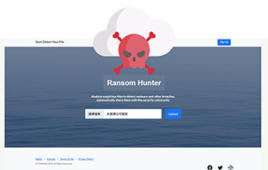Software allows interactive tabletop displays on web

Click here for more information. |
||||
WEST LAFAYETTE, Ind. – Researchers have developed a new type of software that enables people to use large visual displays and touch screens interactively over the Internet for business and homeland security applications.
Tabletop touch-operated displays are becoming popular with professionals in various fields, said Niklas Elmqvist, an assistant professor of electrical and computer engineering at Purdue University.
“These displays are like large iPhones, and because they are large they invite collaboration,” he said. “So we created a software framework that allows more than one display to connect and share the same space over the Internet.”
Users are able to pan and zoom using finger-touch commands, said Elmqvist, who named the software Hugin after a raven in Norse mythology that provided the eyes of ears for the god Odin.
“Hugin was designed for touch screens but can be used with any visual display and input device, such as a mouse and keyboard,” he said.
Tabletop displays commercially available are the size of a coffee table. The researchers created a unit about twice that size – 58 inches by 37 inches – for laboratory studies. They tested the software on 12 users in three groups of four on Purdue’s main campus in West Lafayette, Ind., and at the University of Manitoba in Canada. The teams worked together to solve problems on tabletop systems.
Findings were detailed in a research paper presented earlier this month during the ACM International Conference on Interactive Tabletops and Surfaces 2010 in Saarbr?cken, Germany.
The collaborative capability would aid professionals such as defense and stock market analysts and authorities managing emergency response to disasters. The program allows users to work together with “time-series charts,” like the stock market index or similar graphics that change over time, said Elmqvist, who is working with doctoral student Waqas Javed and graduate student KyungTae Kim.
“This system could be run in a command center where you have people who have access to a tabletop,” Elmqvist said. “In future iterations it might allow integration of mobile devices connected to the tabletop so emergency responders can see on their small device whatever the people in the command center want them to see.”
Participants have their own “territorial workspaces,” where they may keep certain items hidden for privacy and practical purposes.
“Everyone only sees the things you send to a public domain on the display,” Elmqvist said. “This is partly for privacy but also because you don’t want to overload everybody with everything you are working on.”
The researchers are providing Hugin free to the public and expect to make the software available online in December.
“Other people will be able to use it as a platform to build their own thing on top of,” he said. “They will be able to download and contribute to it, customize it, add new visualizations.”
The research paper was written by Kim, Javed and Elmqvist, all from Purdue’s School of Electrical and Computer Engineering, and two researchers from the University of Manitoba: graduate student Cary Williams and Pourang Irani, a professor in the university’s Department of Computer Science.
The researchers are working with the Pacific Northwest National Laboratory to develop technologies for command and control in emergency situations, such as first response to disasters.
Related website:
Niklas Elmqvist: http://engineering.purdue.edu/~elm/
IMAGE CAPTION:
Researchers have developed a new type of software that enables people to use large visual displays and touch screens interactively over the Internet for business and homeland security applications. Here, users at Purdue and the University of Manitoba in Canada interact as if they were in the same room using the same display. (School of Electrical and Computer Engineering, Purdue University)
A publication-quality photo is available at http://news.uns.purdue.edu/images/2010/elmqvist-hugin.jpg
Abstract on the research in this release is available: http://www.purdue.edu/newsroom/research/2010/101123ElmqvistHugin.html




